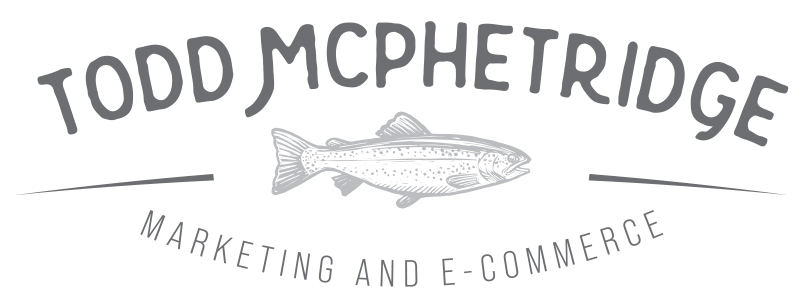Shopping Marketing Consultant
Your Shopping image is the first pitch and sometimes the only pitch. The frame has to do four jobs in one glance: show the angle that matters, communicate scale, surface trust with native badges, and keep backgrounds clean so the product reads instantly. This guide gives merch and creative teams a practical plan for product image optimization that raises relevance and secures a Shopping CTR lift without gaming policies. If you want a senior eye from a marketing consultant, use the testing slate at the end to prove wins fast.
What a winning Shopping image communicates in one second
- Shape and angle: the viewpoint that helps a shopper identify the product type correctly on a crowded shelf of tiles.
- True scale: a visual cue that answers how big it is in real life so returns drop and clicks are qualified.
- Variant clarity: color or finish that matches the selected SKU to avoid mismatch bounce.
- Legibility: edges and contrast that survive small sizes and dim screens.
Angle rules that carry across categories
Choose a default angle that signals function at a glance. Use additional_image_link for alternatives, but lead with one angle that wins more often than not.
| Category | Default Angle | Why It Works | When To Switch |
|---|---|---|---|
| Footwear | Three-quarter front, slight top tilt | Shows toe shape, sole, and silhouette together | Side profile for boots with unique tread or shaft detail |
| Bags and cases | Front with slight angle plus strap visible | Reads capacity and carry style quickly | Open top for organizers where interior is the sell |
| Small appliances | Three-quarter with control panel facing viewer | Confirms interface and form factor | Exploded view secondary for multi-attachment sets |
| Beauty and grooming | Front label square to camera | Label is the SKU identity and shade indicator | Swatch macro for shade-first products as secondary |
| Tools and hardware | Three-quarter with bit or head visible | Communicates use case quickly | Close-up macro when precision tip is the differentiator |
Make scale obvious without props that break policy
- Human cue: a hand, wrist, or shoulder in additional images clarifies size. Keep the main image clean if your platform requires a pure background.
- Relative objects: coins or rulers often violate rules. Prefer category-appropriate context in secondary images, such as a shelf or a standard laptop.
- Shadow discipline: a soft, realistic shadow under the product increases perceived depth and helps size perception without clutter.
Background rules that reduce disapprovals and help CTR
- Keep main images clean: white or very light neutral. Avoid heavy gradients, borders, or drop-ins.
- Avoid overlays: no promo stickers, text, or icons on the primary image. Use native price drop or pickup badges instead.
- Edge safety: leave breathing room so cropping on different placements does not clip the product.
Badges that build trust without clutter
Let the platform carry the heavy badges. Your job is to qualify the product so badges feel earned rather than forced.
- Price drop and sale: only when accurate and supported by feed attributes. Do not simulate with artwork.
- Pickup or local availability: ensure feed parity and correct store IDs so local annotations display reliably.
- Ratings: push review syndication to qualify for native star displays that lift CTR on crowded terms.
Variant accuracy is non negotiable
Color, pattern, and finish must match the selected child SKU or shoppers will bounce. Set a strict workflow.
- Map variant IDs to assets: each child SKU has a named set of approved images.
- Lock naming: use consistent color names between PDP and feed to avoid confusion.
- Audit weekly: sample high volume SKUs for mismatches between selected variant and primary image.
Composition checklist for the lead image
- Primary angle that identifies the product type at a glance
- High contrast against neutral background with clean edges
- Natural shadow for depth and scale
- Variant true to the SKU selected in the feed
- Crop that reads on small screens with no clipped corners
When lifestyle belongs in the primary frame
Most placements want a clean product-on-light background. Some categories earn higher CTR with a restrained lifestyle angle even as the primary, especially if competitors look identical in pure pack shots.
- Furniture and decor: a minimal room edge that shows proportion can outperform a floating sofa.
- Apparel: on-body images help fit clarity for dresses or outerwear when isolated garments blend together.
- Outdoor gear: a field angle that shows scale and use can qualify clicks better than a studio shot alone.
Confirm policy before using lifestyle as the lead. If policies require a plain background for the main image, shift lifestyle to the first secondary slot and rely on contrast and angle to stand out in the primary.
Image quality specs that matter most
- Resolution: upload at least 1200 px on the shortest side to avoid blur in zoom views.
- Compression: export at a level that preserves edges on mobile. Test on dim screens to ensure crispness.
- Color accuracy: use a calibrated workflow for shade-critical items. Show swatch macros in additional images.
Visual testing that proves ROI
Treat images like ad creative. Set a simple visual testing plan and keep results in a shared log.
- Define variables: lead angle, crop tightness, lifestyle versus studio, and presence of a subtle shadow.
- Pick test SKUs: choose two hero SKUs per category with stable demand so noise is low.
- Run two-week cycles: swap one variable at a time. Do not change titles or price during the test window.
- Measure: CTR, click share, conversion rate, and contribution per click for each variant.
- Decide: keep changes that increase CTR without lowering conversion quality.
Testing matrix you can start with
| Test | Variant A | Variant B | Primary KPI | Success Rule |
|---|---|---|---|---|
| Angle | Three-quarter | Front-on | CTR | Adopt if CTR lifts 5 percent with stable conversion |
| Crop | Standard crop | Tighter crop with more product fill | CTR and bounce rate | Adopt if CTR lifts and bounce does not rise |
| Shadow | No shadow | Soft natural shadow | CTR | Adopt if CTR lifts 3 percent or more |
| Primary style | Studio | Minimal lifestyle background | CTR and conversion | Adopt if both improve or hold within tolerance |
Category playbooks
Apparel
- Lead on-body for dresses and coats to communicate fit and length.
- Use detail macro in secondary for texture and stitching quality.
- Normalize color names and ensure swatches match the lead image.
Home goods
- Show capacity or dimensions in secondary images with a discreet visual cue, not text overlays.
- Angle that reveals handles, spouts, or grips often outperforms straight-on.
- Keep surfaces matte when possible to reduce glare and blown highlights.
Beauty
- Lead with the label. Add a swatch macro next in sequence.
- Use even lighting that preserves color accuracy for shade selection.
- For sets, an exploded view in secondary helps shoppers understand contents.
Workflow that keeps images and feeds in sync
- Asset registry: a spreadsheet or DAM folder where each SKU has a canonical set of approved images with version numbers.
- Change control: no replacement of lead images without a ticket that lists SKUs, reason, and test window.
- Feed parity checks: a weekly job that compares variant color names in the feed to asset names and flags mismatches.
Seven quick wins most catalogs need
- Re-shoot high volume SKUs with a crisp three-quarter angle and consistent lighting.
- Add a natural shadow under products that look flat on white.
- Correct variant mismatches on top sellers first.
- Replace low resolution images that blur on zoom.
- Move lifestyle images to the first secondary slot with composition that mirrors the primary.
- Introduce shade macros for color-critical categories.
- Retire images with borders, stickers, or heavy gradients that distract or risk disapproval.
Scorecard to review weekly
- CTR by category and angle: track winners and move rules into briefs.
- Conversion rate by lead style: ensure CTR lifts are not attracting the wrong clicks.
- Return rate by variant: check whether color or size confusion is driving costly returns.
- Disapproval count and reason: keep a log to prevent repeat violations.
- Contribution per click for test SKUs: confirm profit quality, not only clicks.
Creative brief template for image shoots
Give photographers and retouchers a tight brief so outcomes are consistent.
- SKU list with variant mapping and the intended lead image per SKU
- Angle references with do and do not examples
- Background, lighting, and shadow standards
- Crop and safe area measurements for main placements
- Secondary shot plan: lifestyle, macro, exploded view, or on-body
FAQ for merch and creative teams
Can we add text to the primary image
Avoid it. Rely on native badges and keep overlays in secondary images only if policy allows.
How many images should each SKU have
Five to seven is a practical range. One strong primary, then secondary shots that handle scale, lifestyle context, and key details.
Is lifestyle always better
Not always. Use lifestyle in secondary for clarity. Promote to primary only when tests show a clear CTR and conversion win for your category and policy allows.
How often should we refresh
Quarterly for evergreen products and ahead of seasonal demand. Run a two-week test window before rolling changes across a full category.
Request an Image Testing Slate
If you want a fast, defensible plan for product image optimization, request an image testing slate. I will define angle and crop variants, write a two-week test calendar, and set decision rules that target a measurable Shopping CTR lift without risking policy issues. You will get a structured slate, a brief for your photographer, and a simple log to track results with the clarity of a senior marketing consultant.

















